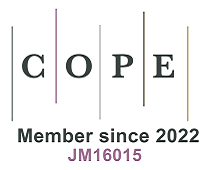fig4

Figure 4. The effect of environmental variables on the passive film. (A) The passive film in the open air is constituted by a two-layer structure, specifically, the Cr-rich inner layer and the Fe-rich outer layer. (B) When immersion in the solutioncontaining chlorides, the CrOOH disappears[28]. (C) When the temperature increases, the passive film thickens and becomes more enriched in Cr[35]. (D) When the hydrostatic pressure increases, less Cr2O3 is detected[37]. (E) Removing oxygen decreases the point defects in the passive film and lowers the film/solution potential drop[35]. (F) Hydrogen sulfide accelerates the film dissolution process and local acidification processes[38]. (G) Increasing the anodic potential transforms the passive film from p-type to n-type[36]. (H) Hydrogen charging makes the passive film more conductive and imparts it with a larger OH-/O2- ratio[39,40]. (I) Stress creates more point defects and more soluble CrO3 in the passive film[41,42].










